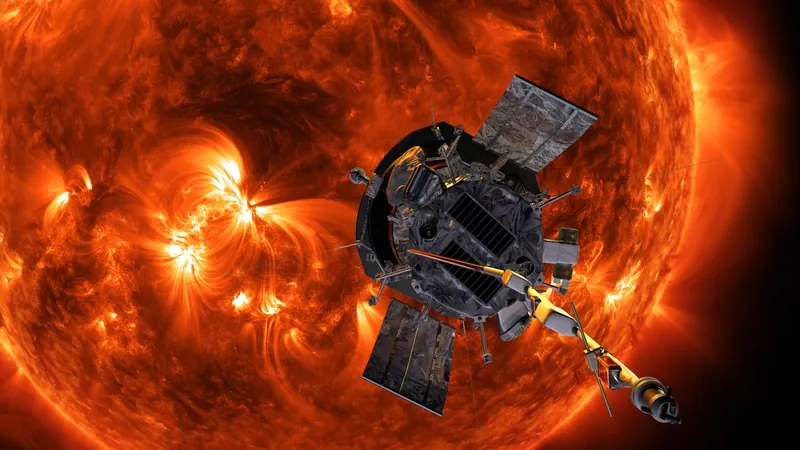
NASA's Parker Solar Probe Triumphs with Record-Breaking Second Solar Flyby!
2025-03-27
Author: Yu
NASA's Parker Solar Probe has made headlines once again by successfully completing its second close flyby of the sun, achieving remarkable feats in solar science. The car-sized spacecraft zoomed within a staggering 8 million miles (6.1 million kilometers) of our star's surface on March 22, reaching speeds of 430,000 miles per hour (692,000 kilometers per hour). This impressive velocity mirrors the record it set during its first encounter on Christmas Eve last year.
During this daring approach, the Parker Solar Probe operated entirely autonomously, utilizing its four science instruments to gather invaluable data regarding the solar wind emanating from the sun's corona—the very outer layer of its atmosphere. Just days after the flyby, NASA confirmed that the probe successfully transmitted a beacon tone back home, indicating that everything was functioning smoothly.
“This flyby allows for unparalleled scientific measurements of solar wind and associated activities,” NASA noted in a statement. Scientists anticipate that the data collected during this close encounter will enhance our capacity to predict space weather and potentially unravel longstanding mysteries surrounding our sun, such as the enigma of why its corona is hundreds of times hotter than the sun’s surface.
Janet Petro, NASA's acting Administrator, emphasized the groundbreaking nature of this mission, stating, “This trailblazing research is rewriting the textbooks on solar science by venturing where no human-made object has ever gone before.” The mission's success underscores the innovative technology behind the probe's custom heat shield, which protects it from the sun's extreme temperatures, ensuring that its electronic components and instruments remain at comfortable operating temperatures.
In recognition of their extraordinary efforts, the Parker Solar Probe team—comprising engineers and scientists from NASA, the Johns Hopkins Applied Physics Laboratory, and over 40 additional partner organizations across the nation—was awarded the prestigious 2024 Robert J. Collier Trophy by the National Aeronautic Association. Ralph Semmel, director of the Johns Hopkins Applied Physics Laboratory, praised the team for accomplishing what was previously deemed impossible after more than six decades of research and obstacles.
The Parker Solar Probe, launched in 2018, is set to conduct another flyby later this year on June 19, promising to deliver even more groundbreaking data about our sun. As one of the most ambitious ventures in space exploration, this mission not only enhances our understanding of stellar dynamics but also plays a critical role in protecting Earth from space weather events. Stay tuned for updates from the Parker Solar Probe and its continuing journey to unlock the secrets of the solar system!



 Brasil (PT)
Brasil (PT)
 Canada (EN)
Canada (EN)
 Chile (ES)
Chile (ES)
 Česko (CS)
Česko (CS)
 대한민국 (KO)
대한민국 (KO)
 España (ES)
España (ES)
 France (FR)
France (FR)
 Hong Kong (EN)
Hong Kong (EN)
 Italia (IT)
Italia (IT)
 日本 (JA)
日本 (JA)
 Magyarország (HU)
Magyarország (HU)
 Norge (NO)
Norge (NO)
 Polska (PL)
Polska (PL)
 Schweiz (DE)
Schweiz (DE)
 Singapore (EN)
Singapore (EN)
 Sverige (SV)
Sverige (SV)
 Suomi (FI)
Suomi (FI)
 Türkiye (TR)
Türkiye (TR)
 الإمارات العربية المتحدة (AR)
الإمارات العربية المتحدة (AR)